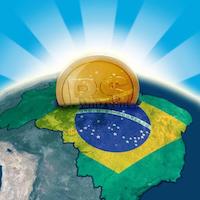The index registered its fourth consecutive month of gains, primarily driven by commodities-related stocks this time.
In July, the Ibovespa closed with a 3.27% increase, marking its fourth consecutive monthly gain. On the last trading day of the month (July 31st), the main index of the Brazilian stock exchange rose, driven by commodity exporters and the new dividend policy of Petrobras (PETR3;PETR4). The market was also monitoring the decision of the Monetary Policy Committee (Copom) for the week. Petrobras and Vale (VALE3), which carry significant weight in the index, saw notable gains, and the outlook for the real estate sector stimulated interest in CSN (CSNA3) shares.
Exporters of commodities, such as BRF (BRFS3), Marfrig (MRFG3), and São Martinho (SMTO3), also advanced due to China’s announced measures to boost consumption in the country.
Besides commodity exporters, companies related to the domestic market also showed considerable growth, with investors keeping an eye on Copom’s decision.
The overall trend in July was marked by stronger gains in companies linked to the commodities sector. Shares of PRIO (PRIO3) and 3R Petroleum (RRRP3) saw substantial increases during the month, along with Gerdau (GGBR4) and CSN (CSNA3) stocks.
In July, the highlights were the sectors linked to commodities, benefiting from the recovery of product prices. Additionally, there was notable appreciation in some sectors related to the local economy, which, in our opinion, reflects the expectation of a decrease in interest rates. These sectors include healthcare, education, and real estate development.
The increasingly strong prospect of the United States’ economy avoiding a recession and China’s efforts to achieve 5% growth, even with stimulus measures, are driving up prices for non-manufactured products. Commodities are also gaining strength due to Chinese stimuli, with Brent crude oil rising by almost 14% in the month, and iron ore potentially following a similar trend. As a result, there is a positive outlook for Vale’s shares, as they have not fully kept up with the rally in other sectors of the Ibovespa.
In July, export-oriented companies took the lead, surpassing domestic market-focused companies that had been driving the Ibovespa in previous months. However, the latter continued to show overall gains. For instance, Méliuz (CASH3) shares rose nearly 27%, MRV (MRVE3) increased by 20%, and Cyrela (CYRE3) went up by 19%.
The local Central Bank is expected to cut its benchmark interest rates by 0.25 percentage point during its meeting on Tuesday and Wednesday this week, according to economists consulted by Reuters. However, financial market operators were more divided, factoring in a probability of around 60% for a half-point reduction and a 40% chance of a milder adjustment.
August begins with the Copom meeting and the imminent interest rate cut. There is still no consensus on whether the cut will be 25 or 50 basis points, but it is certain that it will happen. The positive moment is further supported by other central banks like the Federal Reserve and the ECB indicating that the end of the monetary tightening cycle is near (the US futures market is already pricing in the end of the cycle).
Today, there was a comment that the decision of the Chilean Central Bank to cut the basic interest rate by one percentage point last Friday may put pressure on the Brazilian monetary authority to be more aggressive in its decision.
In the US, the expectation that the Federal Reserve has already concluded its interest rate hike cycle also contributed to driving the indices higher during the month. Despite modest gains today, the Dow Jones, S&P 500, and Nasdaq rose by 3.34%, 3.11%, and 4.05%, respectively. This was influenced not only by the easing of inflation but also by signs that the US economy is still strong.
Overall, the investment market is finding the current scenario interesting, with a greater appetite for global risk, which is reflected in the rise of the Brazilian stock market and the performance of stocks.
Indeed, with the positive economic outlook and the rise in commodities, the dollar weakened against the Brazilian real in July, declining by 1.2%. In today’s trading session, the American currency remained almost stable, with a decrease of 0.03%, trading at R$4.729 for buying and R$4.73 for selling.

Leave a Reply